As the pace of life becomes increasingly hectic, our homes become vital sanctuaries of calm and peace. Among various design styles, the minimalist Japanese living room stands out as a beacon of tranquility. This blog post will take you on a journey through the world of Japanese minimalism, offering tips and inspiration to help you create a living room that is not just visually stunning, but also a tranquil retreat from the outside world.
Serenity in a Minimalist Japanese Living Room
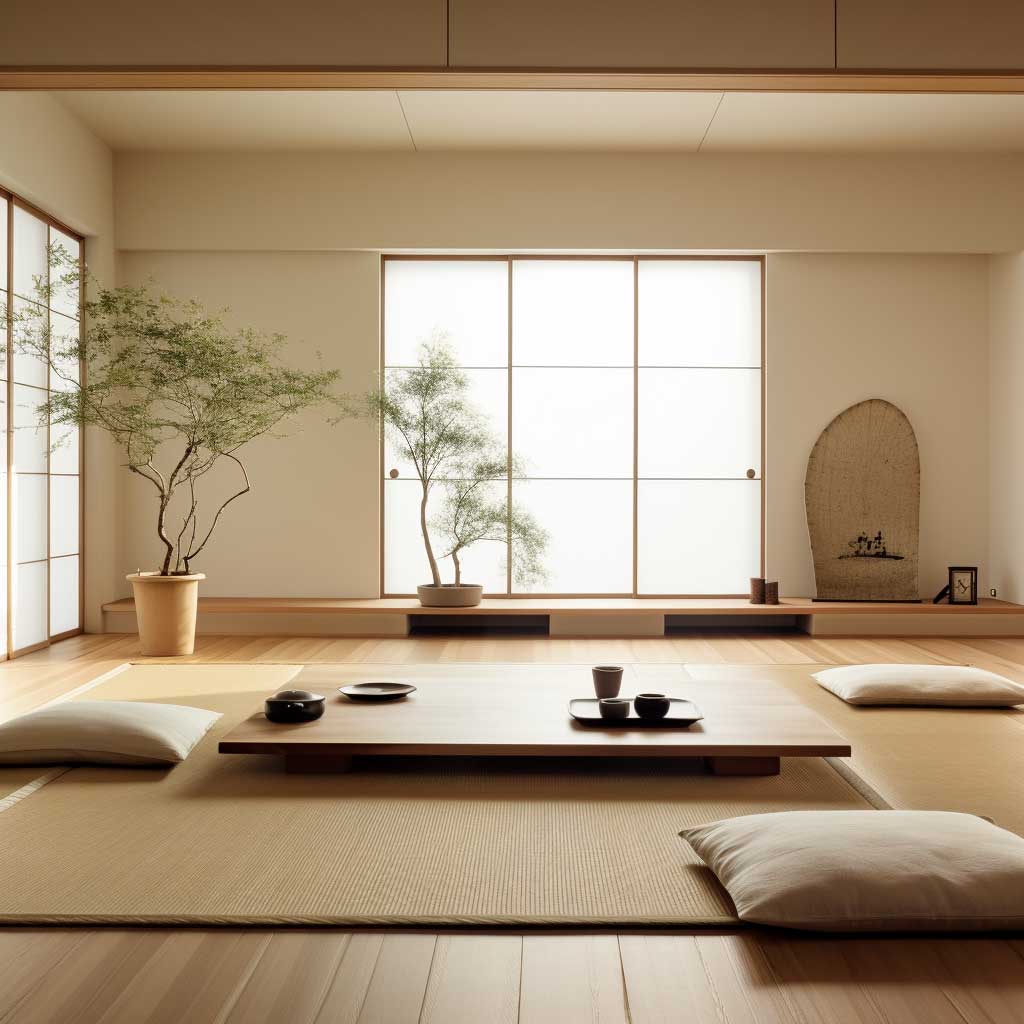
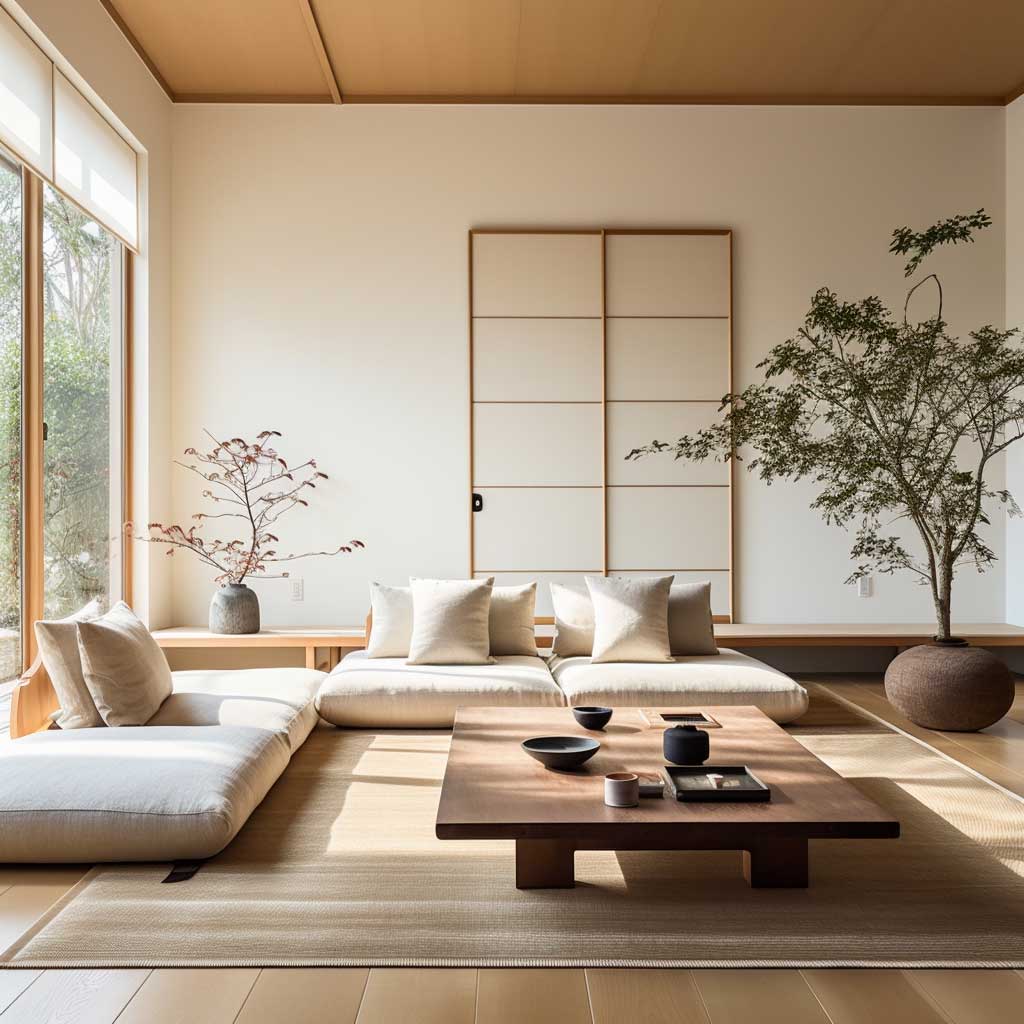


This image effortlessly encapsulates the essence of a minimalist Japanese living room – the embodiment of tranquility and serenity. As your eyes move across the image, the minimalistic layout comes into view, capturing a feeling of spaciousness and simplicity. The room, void of clutter and unnecessary furniture, reveals the beauty of Japanese minimalism.
In the heart of the room lies a low, wooden table, polished to perfection, echoing a comforting warmth. Around it, soft floor cushions are carefully placed, reflecting the traditional Japanese practice of sitting on the floor. Their muted tones add to the calming ambience, each detail weaving an intricate story of simplicity, functionality, and respect for space.
The floors, adorned with traditional tatami mats, add a sense of authenticity to the room. The mats, with their distinct straw-like texture and subtle fragrance, are a cornerstone of Japanese interior design. They bring an earthy, natural charm to the living room, serving both functional and aesthetic purposes.
One of the most striking elements of this living room is the natural light softly filtering in through the Shoji screens. These translucent paper screens, a significant element in Japanese architecture, provide privacy while allowing sunlight to infuse the space. The resulting gentle glow illuminates the room, highlighting the minimalistic elements and casting a harmonious blend of light and shadow.
The room’s design is a nod towards nature, a characteristic feature of Japanese interiors. Indoor plants, placed thoughtfully, add a splash of vibrant green, contrasting beautifully with the neutral palette of the room. These hints of nature enhance the minimalist design, contributing to the serene atmosphere, bringing the tranquility of nature indoors, and adding life to the space.
The minimalist Japanese living room in this image is a sanctuary of calm, enveloped in soft light and imbued with a deep respect for space and nature. Every element speaks of a measured approach to design, striking a delicate balance between aesthetics and functionality, epitomizing the beauty of ‘less is more.’
Harmony in Design: A Minimalist Japanese Living Room
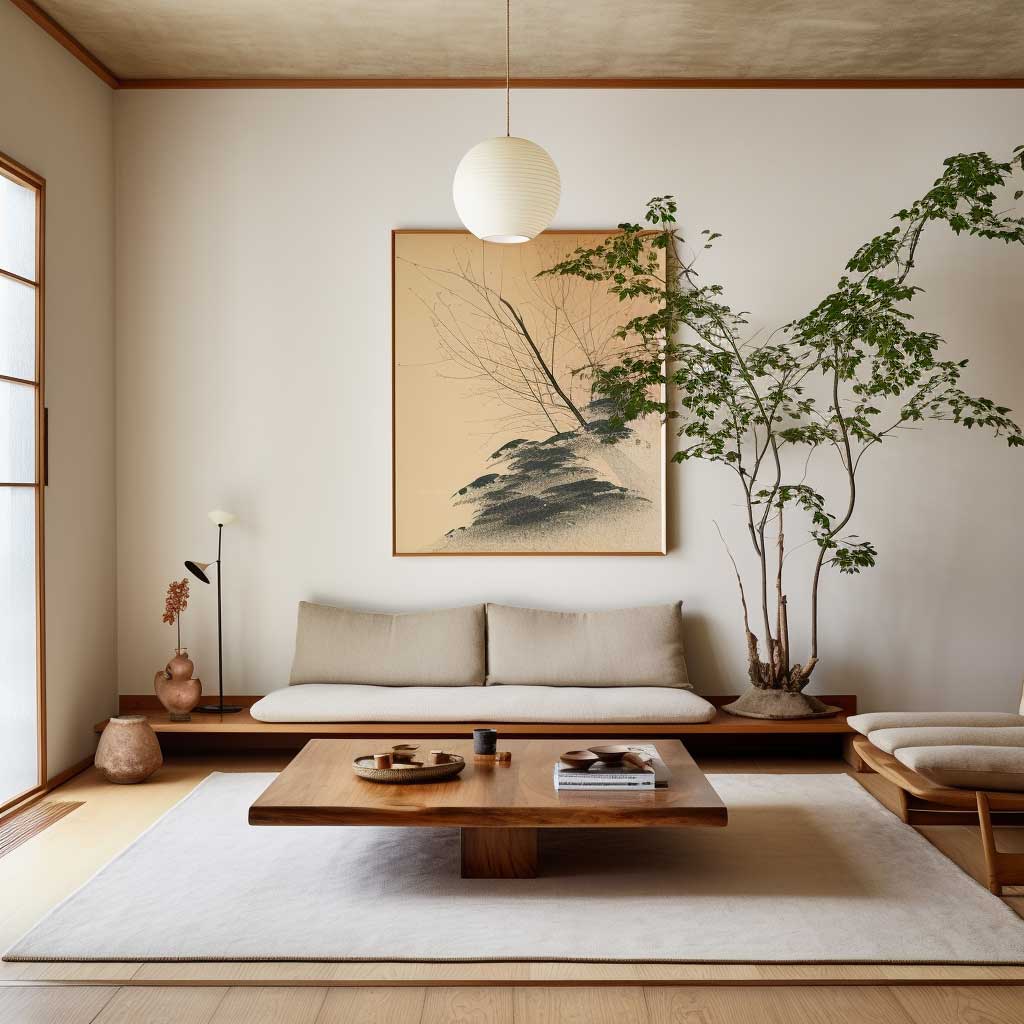
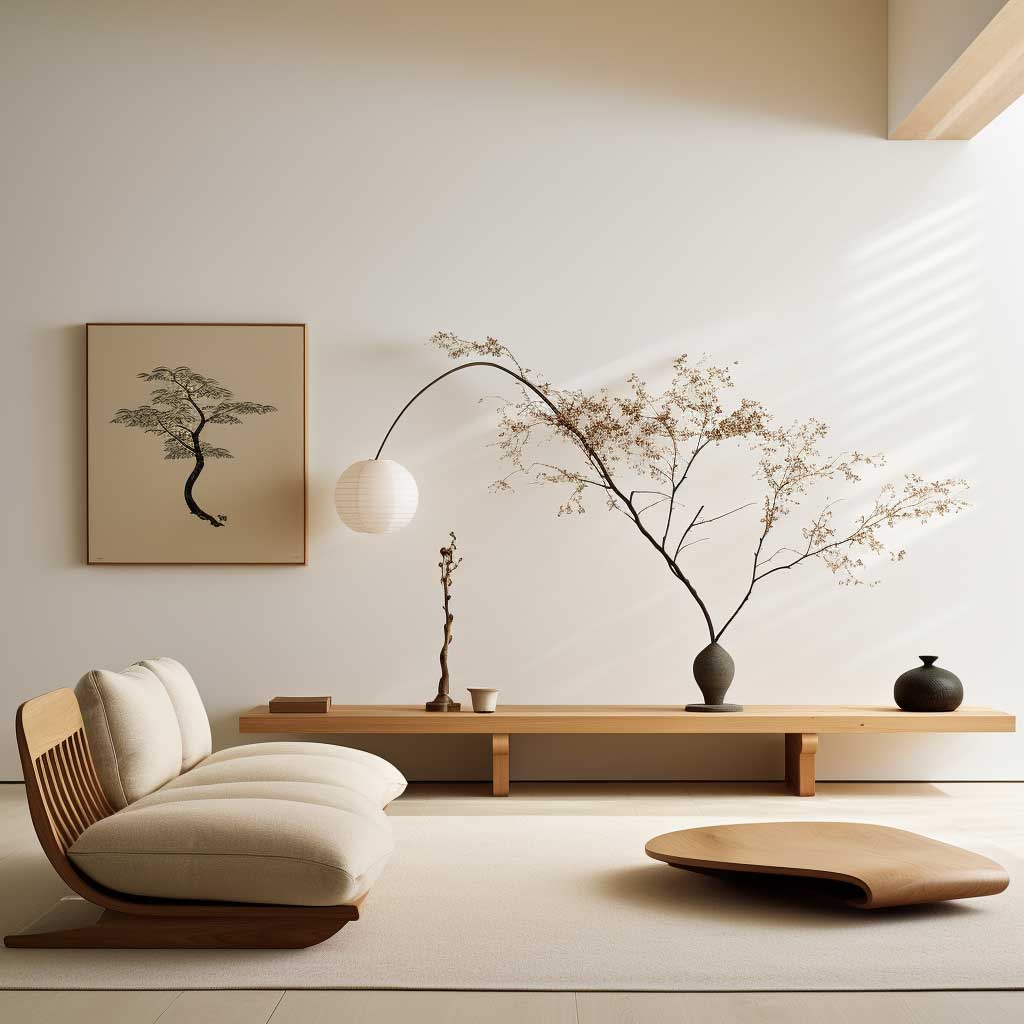
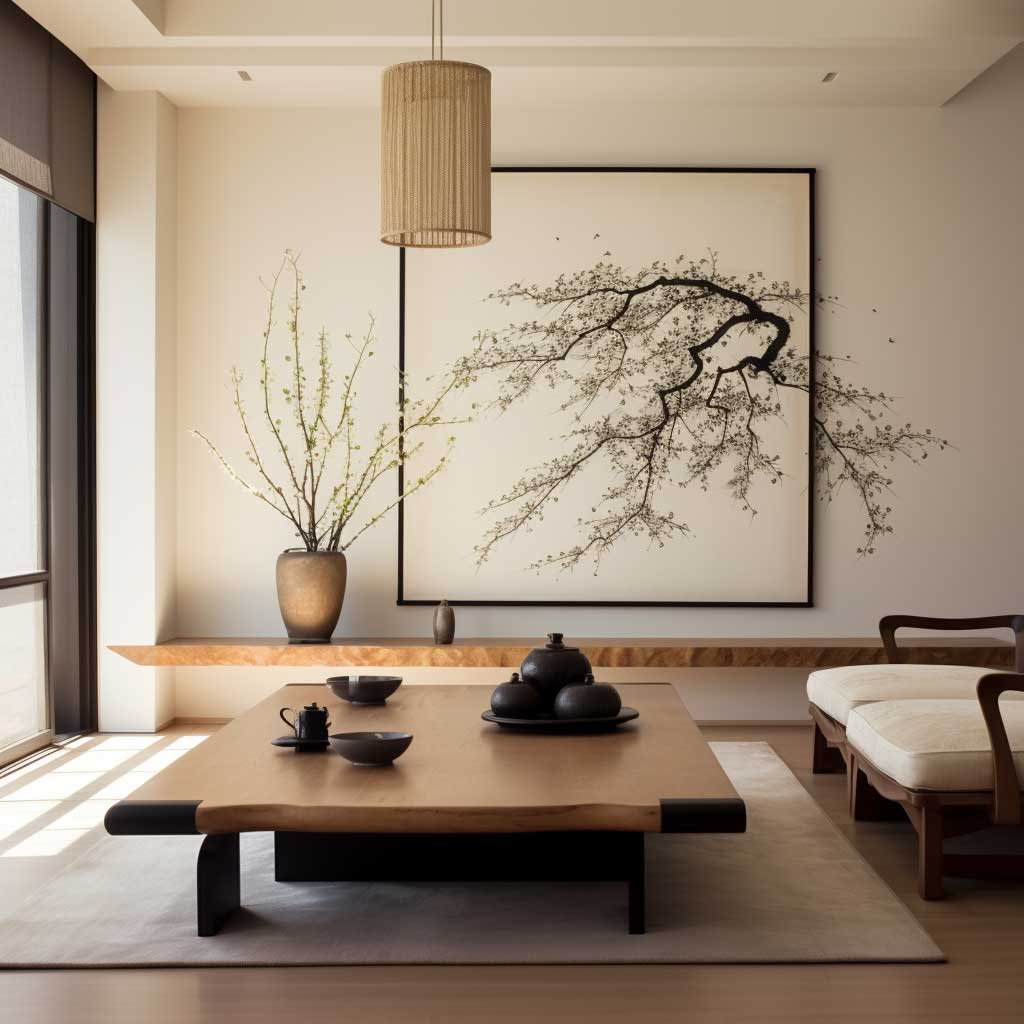
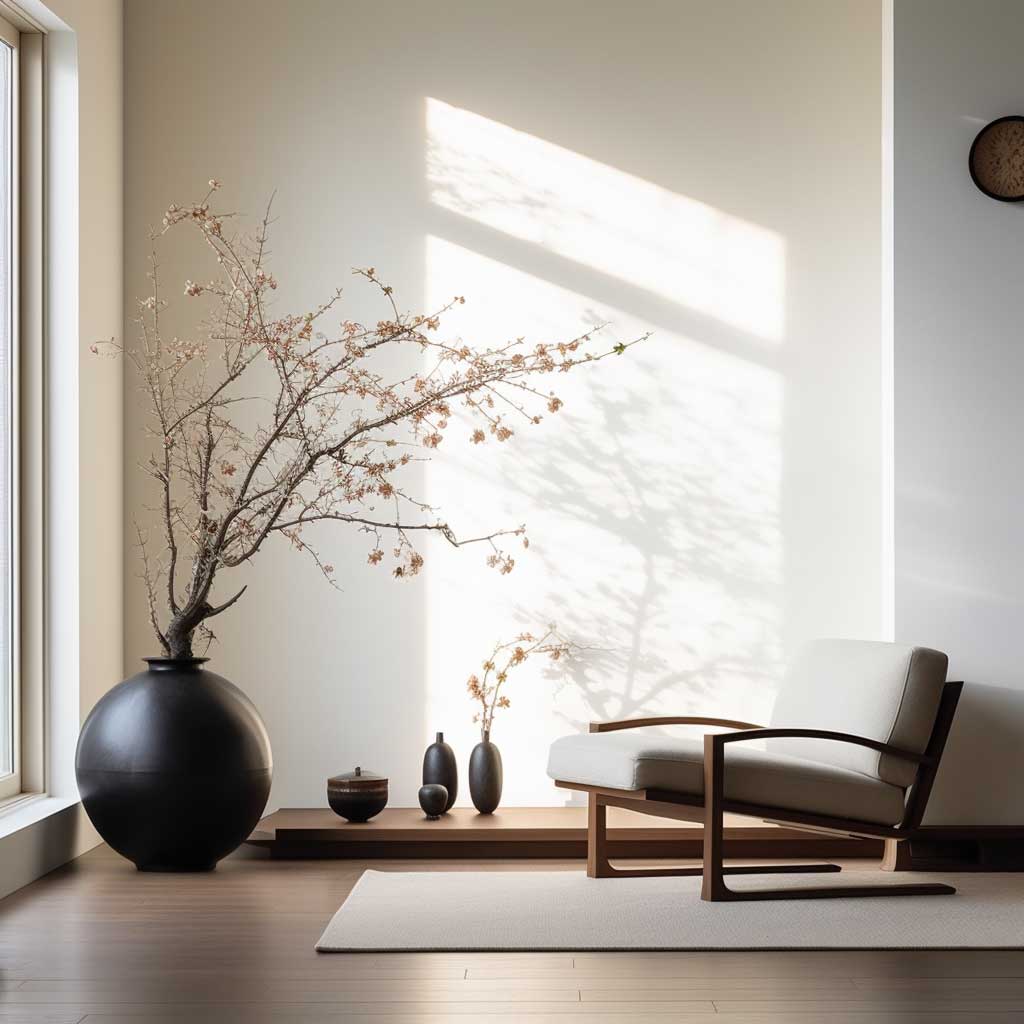
The picture presents a visual treat of a minimalist Japanese living room, illustrating a remarkable harmony between space, form, and function. The room’s key features communicate an inviting serenity, subtly narrating a tale of Japanese tradition blended with minimalistic aesthetics.
At the core of the room is the charming tokonoma alcove, a traditional feature in Japanese homes. This recessed space often houses a piece of art or a flower arrangement, serving as the room’s focal point. In this living room, an elegant hanging scroll adorns the tokonoma, its intricate design offering an artistic touch that draws the eye and engages the mind.
Surrounding the tokonoma, the minimalist layout of the room provides an overwhelming sense of peace and tranquility. Each piece of furniture is chosen and placed with purpose, adhering to a less-is-more philosophy. The room beautifully embodies the Japanese concept of “Ma” – the conscious use of space and emptiness as an essential part of the design.
Prominently featured is an ikebana arrangement, a traditional Japanese art form that involves the careful arrangement of flowers. More than just a decorative element, the ikebana reflects the room’s connection to nature and art, symbolizing a respect for life and the passage of time.
A closer look reveals subtle details that add to the room’s minimalist charm. The natural materials – the wood of the table and chairs, the washi paper of the shoji screens, the fabric of the cushions – all contribute to a palette of soft, earthy tones. This color scheme, devoid of any harsh contrasts, enhances the overall soothing atmosphere of the room.
In essence, this minimalist Japanese living room epitomizes harmony in design. Every element, from the traditional tokonoma alcove to the minimalist furniture, contributes to a serene ambiance. It beautifully showcases the Japanese approach to design, where minimalism is not just about simplicity, but about purposeful, meaningful choices that enhance the living experience.
Timeless Elegance of a Minimalist Japanese Living Room


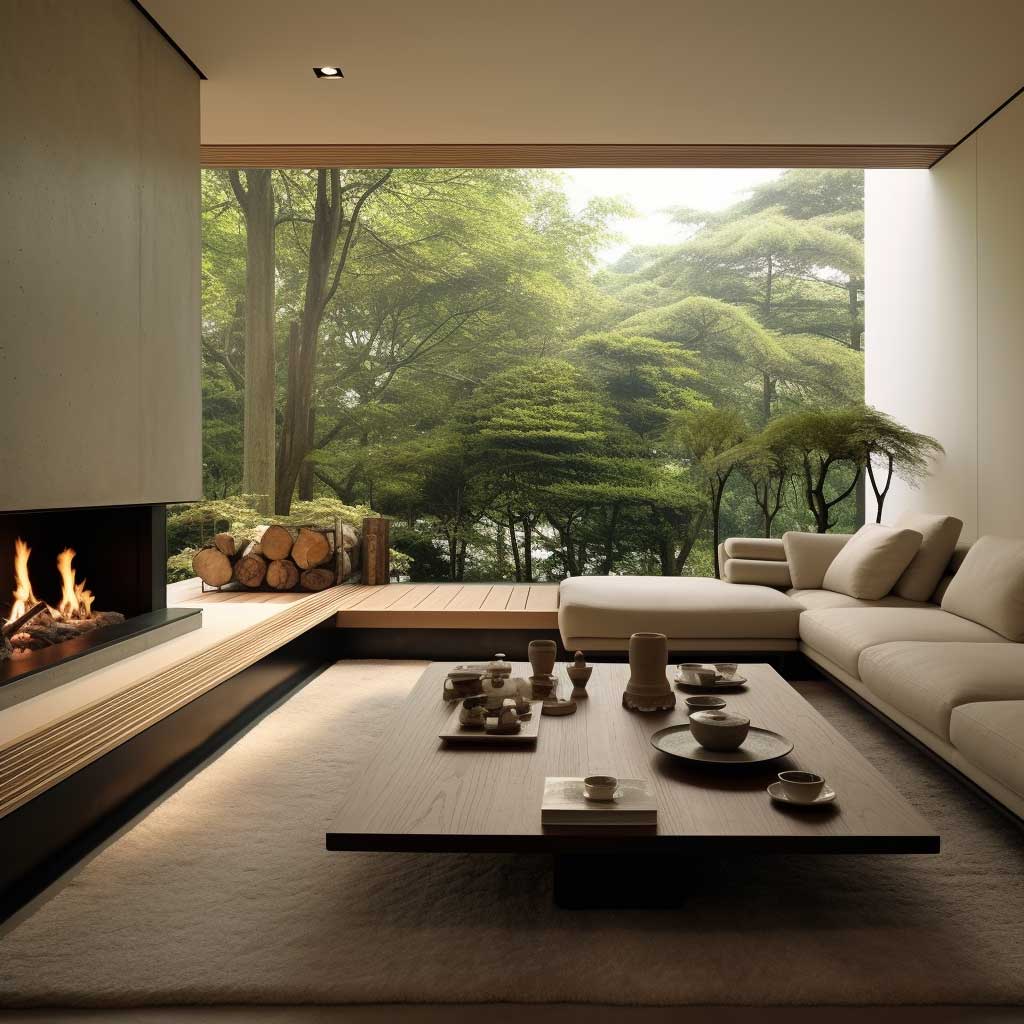

This photo captures the timeless elegance of a minimalist Japanese living room. A quintessential embodiment of Zen-inspired design, the room illustrates an understated luxury that communicates peace, balance, and mindfulness.
The room’s center features a simple yet striking hearth, a traditional Japanese irori. Its minimalist design, coupled with its practicality, embodies the spirit of wabi-sabi – the Japanese philosophy that finds beauty in imperfection and transience. The hearth, with its warm, inviting glow, adds a sense of comfort and intimacy to the room.
Alongside the irori is a sliding glass door that reveals a calming view of a meticulously maintained Japanese garden. The garden, visible from the living room, creates a seamless transition from the indoor space to the outdoor, blurring the boundaries between the two. This intentional integration of nature is a defining element in Japanese interior design, facilitating a deep connection between the home’s inhabitants and the natural world.
The room’s furniture, consistent with the minimalist theme, is pared down to the essentials. However, each piece exudes an understated elegance, reinforcing the room’s serene ambiance. The soft, warm hues of the wood contrast beautifully with the greens visible from the garden, enhancing the sense of peace and tranquility.
An impressive ceiling, with exposed wooden beams, adds a dramatic touch to the room. It not only creates a sense of height and openness but also pays homage to traditional Japanese architecture. The natural texture and rich color of the wood contribute to the room’s warm, welcoming atmosphere.
Subtle touches of Japanese art and decor – a tastefully placed bonsai, an elegant hanging scroll, or a beautiful ceramic tea set – are dispersed throughout the room. These elements, though minimal, add a layer of cultural depth to the design, enhancing the room’s aesthetic appeal without causing visual clutter.
In conclusion, this minimalist Japanese living room is a masterclass in timeless elegance. It effortlessly balances simplicity with function, nature with architecture, and tradition with modernity. This room is not merely a living space; it is a sanctuary that calms the mind, uplifts the spirit, and exemplifies the timeless beauty of minimalist Japanese design.












